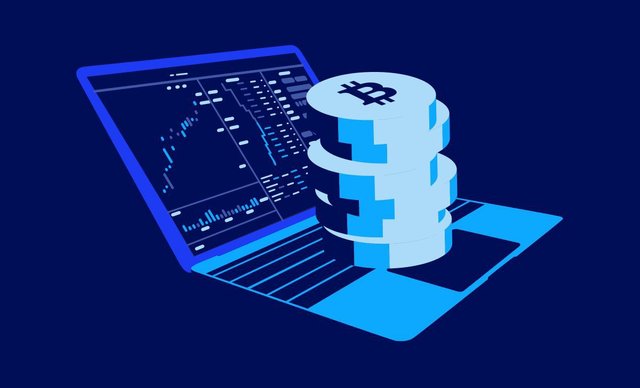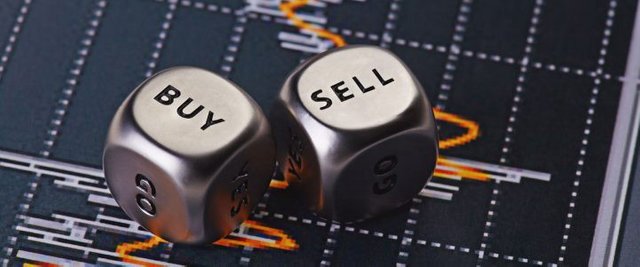BY CRYPTOKARP ON JUNE 11TH 2018 AT 11:01 PM

Image By Cream Crypto News
Welcome back to the 4th part in this series. This part will be concentrated on day trading. Again, if you missed any of the previous articles, I invite you to backtrack to them, HERE, as they’ve been focused on other types of trading. After that, without further adieu, let’s get into day-trading.
End on Close
The term, day-trading, fits stock markets the best in my opinion, as the markets have an open and a close. In crypto though, the markets are on 24 hours (unless the exchange has a maintenance or something crazy and out of the blue happens like a hack for instance).
As a day-trader, you’re looking to buy a stock — a coin — and the one main rule is, is that you will sell your position before the market closes, however as the crypto markets don’t have a close, I’d argue, you’re selling your position before you head off to sleep or away from your computer for a long period of time and thus not being able to babysit your position. Therefore, you’re looking for intra-day volatility to take advantage of.
With all this in mind, you can see where the term, day-trading, comes from and what it describes.
Day In, Day Out
Here’s where you’re lucky (that you’re in crypto and not in stocks). To day trade stocks, you’d need a lot. First, a good broker — which is a hassle in and of itself — and then some costly screeners to identify the stocks that might surge during the day. This helps so you do not stare at charts that aren’t even moving all day and instead focus (play) with the volatile charts and make some money off of them. Obviously, this comes on top of all the learning you’ve done beforehand
You do not day trade without any idea of what you’ll expect out of it.
With crypto however, the coins move enough during the day to not need leverage most of the time (as compared with stocks), and most coins move enough to day-trade on a daily basis. You do need to be aware of the liquidity of your coins though. As I previously stated, you get out of your whole position by the end of day or whenever you’re heading away from your computer. Therefore, you need to be able to even market sell your whole position at once, which can be troubling if the position gets too big compared to the order books, which would lead to big slippage and thus wiping off some of your profits. This is why you need to mind the order books and review them as well.
For instance, if there is 1BTC worth of buy orders at current trading level (plus acceptable slippage), you definitely don’t want to have more than 1BTC worth of that coin — selling it all at once would lead to wiping off one side of the order book, increased slippage — you’d be selling your coins for a lot less than current market price — which would amongst other things, as I already mentioned, decrease your profits, if not worse. This is a sign of bad position size management and after the first instance of this occurring, you should review that trade (and all the others) to find where you made a mistake and how to correct it.
After you’ve selected the range of coins you’ll be looking at (based on liquidity, etc.) you’ll need to know some basic setups. The easiest thing you can do, is buy the rumor and sell the news. This follows a very simple expectation of a price rise as there is something being revealed about the coin on the day. Usually the price surges up when there is an announcement and then all the speculators sell their positions, which causes the price to return to it’s previous levels or go even lower. Here, the timing is very important, as missing it by a few moments can mean your profit is gone, or worse, you’re in a loss now. You could argue whether this strategy is better for a swing trade, but I’d say, you can make money off of it both ways, if you’re executing it correctly.

“The easiest thing you can do, is buy the rumor and sell the news” / Forex Kaupankaynti
As you can see, in the example, there was a catalyst for the price movement, which is generally what you’re looking for. However, there are also many technical levels you can take advantage of to trade daily. Identifying those, though, is all up for you. What kind of indicators or chart patterns you want to use, and how you draw up your charts, as well as what conclusion you paint from it, all of that, is left for you to decide. As I mentioned before, I will not tell you what to use and how, I am not your advisor, I can only share with you some of my knowledge, which I hope you’ll find helpful.
You can look at basic chart patterns, for which you’ll need to know how to read candle-stick charts/patterns (as for all of the previous trading styles), price action, its interpretation, volume and how it affects price action, you’ll need to know how to draw horizontal support/resistance levels, trend lines (if you’re trading a trending market), as well as a range of indicators (MACD, RSI, Ichimoku Cloud). Don’t feel limited to only those, as that was just to name a few, there are many more to explore, try and see if they fit your strategy, trading style.
As well as trying out new indicators, they tend to work better/worse in combination with others, so you’ll need to play with these combinations as well as just the indicators by themselves. You can definitely look up some setups on places like youtube, twitter, etc. However, I’d argue that it’s a lot better to look for explanation of the setups rather than just what to use if you decide to look them up like that. I’d never advise to blindly follow anyone, because it doesn’t lead anywhere in the long-term, and that’s what you’re looking for in trading.
Recap
To quickly recap this article, I was talking about day-trading, what it is, or rather how I define it within the crypto markets; some basics requirements (also for stock markets), and then some basics to point you in the right direction when deciding to try some setups and how to look for them.
After reading this, you should have an idea where to start looking and what to look for to gain some knowledge in your trading, and as I mentioned before, I highly recommend trying out new setups in a demo account, or if the exchange doesn’t have one, simply put the values into an excel spread sheet and track your trades that way. That also makes setting a trading journal easier, which helps to increase your learning curve if done correctly.
Thank you for reading, and I’ll see you in my next article!!
— — — — — — — — — — — — — — — — — — — — — — — — — — — — — —
More On ME👇
I am a cryptocurrency enthusiast, novice trader, and an eager learner. My journey started in crypto a little under a year ago and I’m excited to share my experiences during that time and any insight that will benefit you in the space. Feel free to reach out to me via Twitter or Discord
However I can make this process easier for you I will — So please reach out!
I’ve Got Socials Too 😎
Discord
MaGiKarP#8865
Crypto Karp
Downvoting a post can decrease pending rewards and make it less visible. Common reasons:
Submit